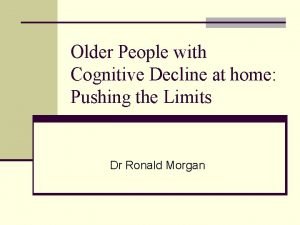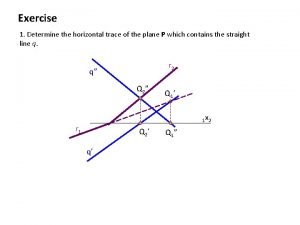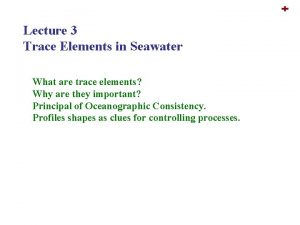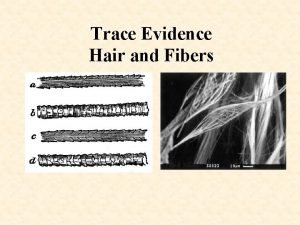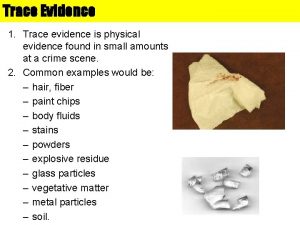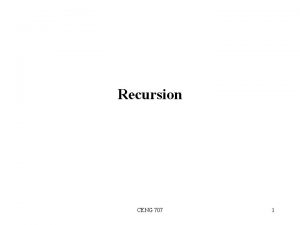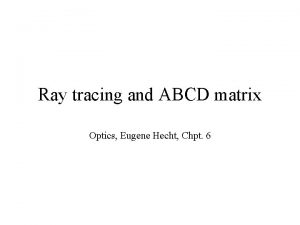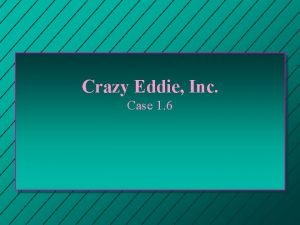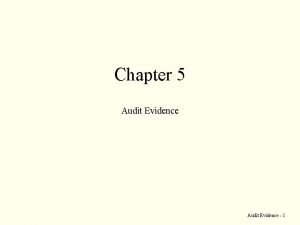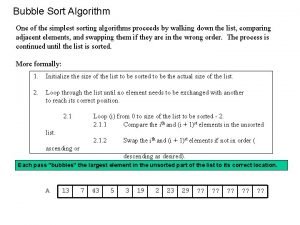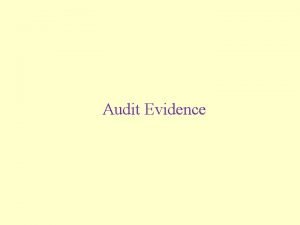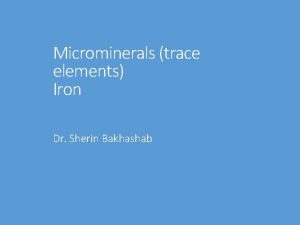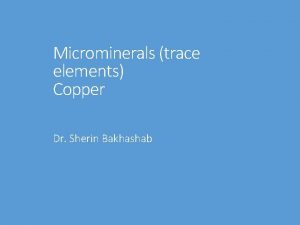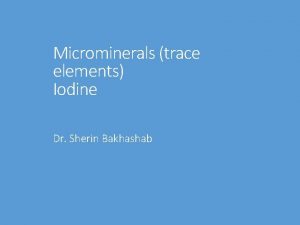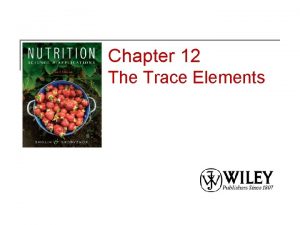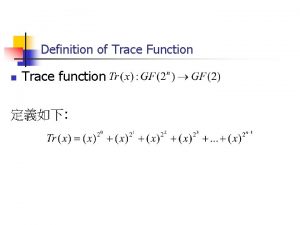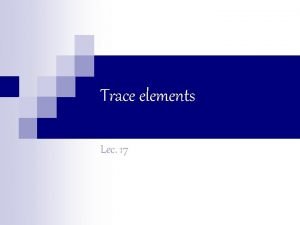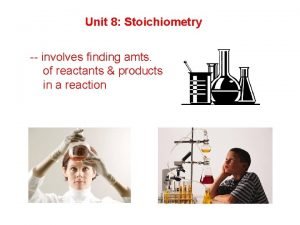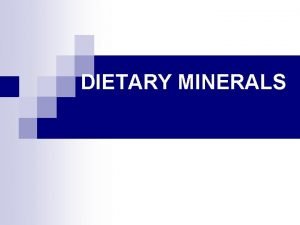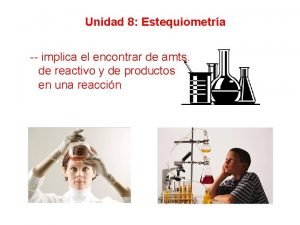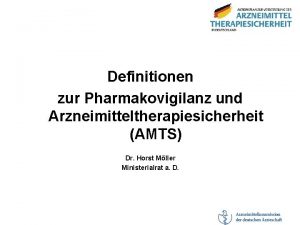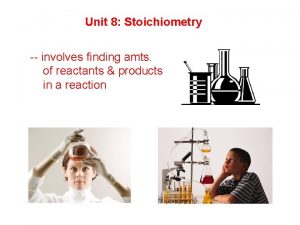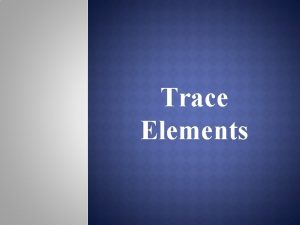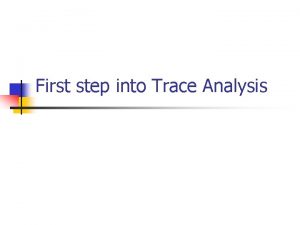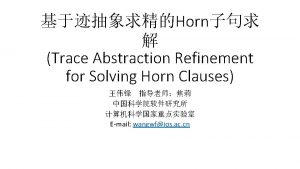Microminerals Trace elements required in small amts Also

























- Slides: 25


Microminerals Trace elements required in small amts. Also measured in mg’s per kg of body weight.

Iron (Fe) • Aids in activation of O 2 and O 2 transport (hemoglobin and myoglobin)

Iron Deficiency • • Anemia Rough hair coat Listlessness Decreased growth

Iron Excess • • Anorexia Decreased serum albumin concentrations Hepatic dysfunction What does hepatic mean?

Zinc (Zn) • Activator of 200 known enzymes including protein synthesis and carb metabolism, skin and wound healing, immune response, fetal development, and growth rate.


Zinc Deficiency • • • Anorexia Alopecia Impaired reproduction Vomiting Hair depigmentation Conjunctivitis

Zinc Excess • Relatively non-toxic, there are reported cases of toxicity due to consumption of pennies.

Copper (Cu) • Catalyst of hemoglobin formation , cardiac function, cellular respiration, connective tissue development, pigmentation, bone formation, myelin formation, immune function. Copper mineral water

Copper Deficiency • • • Anemia Decreased growth Hair depigmentation Bone lesions Aortic rupture Reproductive failure

Copper Excess • Hepatitis and increased liver enzyme activity.

Manganese (Mn) • Activation of enzyme, lipid, and carb metabolism, bone development, reproduction and cell membrane integrity.

Manganese Deficiency • Decreased growth (rare in cats and dogs) • Impaired reproduction

Manganese Excess • Relatively non-toxic

Selenium (Se) • Immune function, interacts with vitamins E to help prevent cellular damage.

Selenium Deficiency • • Muscular dystrophy Reproductive failure Subcutaneous edema Renal mineralization

Selenium Excess • • Vomiting spasms Staggered gait Salivation Decreased appetite Dyspnea “Garlicky breath” Nail loss

Iodine (I) • Aids in thyroid production of thyroxine and triiodothyronine.


Iodine Deficiency • • Goiter Fetal resorption Rough hair coat Enlarged thyroid glands Alopecia Apathy Myxoedema (A mucinous degeneration with thickening of the skin-hypothyroidism) • Lethargy

Iodine Excess • Similar to deficiency

Macro and micro-minerals • Both can interact with each other as either antagonists or synergists. • Even the marginal deficiency of one mineral can decrease or alter the efficacy of another!

Antagonist • These reactions are defined as the presence of one mineral reducing the transport or efficacy of another. • So in other words, one is acting against the other. • Most mineral reactions are antagonistic and can occur during processing, digestion, storage, or transport.

Synergists • Two minerals reacting in a complimentary fashion by either enhancing biologic function or sparing the other mineral. • These guys work together for a good cause.
 Amts score
Amts score Trace of a plane
Trace of a plane Small amounts of trace evidence can be conveniently
Small amounts of trace evidence can be conveniently Trace elements in seawater
Trace elements in seawater Electrical circuit elements
Electrical circuit elements Leave no trace canada
Leave no trace canada Tracer un arc surbaissé
Tracer un arc surbaissé Steam tracing manifold
Steam tracing manifold Hair growth
Hair growth Trace evidence examples
Trace evidence examples Trace evidence examples
Trace evidence examples Box trace recursion
Box trace recursion Box trace recursion
Box trace recursion Eugene hecht
Eugene hecht X-trace: a pervasive network tracing framework
X-trace: a pervasive network tracing framework Leave no trace bsa
Leave no trace bsa Ocr and ocv difference
Ocr and ocv difference Canal de provence carte
Canal de provence carte Scouts leave no trace
Scouts leave no trace Instruction scheduling in compiler design
Instruction scheduling in compiler design Trace vs vouch
Trace vs vouch Trace vs vouch
Trace vs vouch Vouch vs trace
Vouch vs trace Simplest sorting algorithm
Simplest sorting algorithm Trace vs vouch
Trace vs vouch Audit tracing vs vouching
Audit tracing vs vouching
